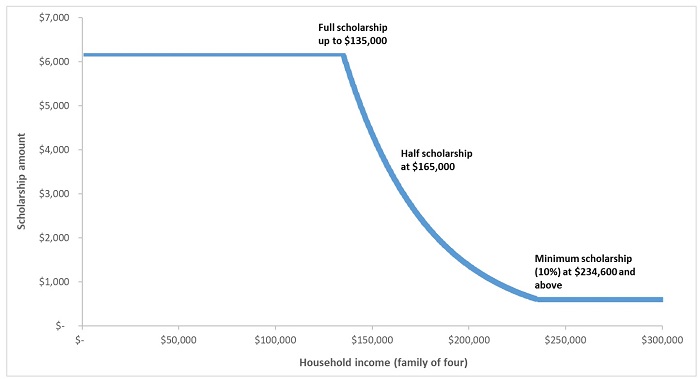Nearly two years after federal data indicated that 99 percent of students had returned to in-person learning full-time, as many as one out of three students still haven’t really returned full-time—because 33 percent of American students remain chronically absent. That means that they’re missing at least 10 percent of school days, or more than three weeks a year. And the consequences can be devastating: Chronic absenteeism predicts worse academic performance and long-term health outcomes, as well as higher risks of dropping out, poverty in adulthood, and involvement in the criminal justice system.
What’s more, that 33 percent is an average. In many schools, especially those enrolling many students from historically underserved populations, the rates are even worse. This creates an equity concern, too, as disproportionate rates of absenteeism can exacerbate already-disproportionate academic, economic, health, and other outcomes.
A recent wave of public attention to student absenteeism has suggested several contributing factors, including escalating mental health crises, spotty transportation access, recent changes to grading policies, and pandemic-induced disruptions to routine. All of these are surely at issue. Having taught before, during, and after the remote learning era, I’d like to add one more probable cause to the list: the shift of so many class materials online.
In the 2010s, when I started teaching high school, the internet was already part of regular school life. I managed all grades online, students enjoyed the occasional online activity (all my fellow teachers know Kahoot!), and I assigned end-of-unit papers via Google Classroom. Most other activities, though, were offline, whether students were doing turn and talks, fishbowl discussions, quick writes, gallery walks, whole-class read-alouds, or even plain, old-fashioned note-taking. There just wasn’t a reason to post all materials online, and like other teachers, I adopted various strategies for absent students to make up missed work as best as they could.
But in March 2020, when schools shut down, every element of class had to move online. Students couldn’t jot down answers to a reading quiz on a half-sheet of notebook paper, so they responded through Google Forms. They couldn’t annotate a poem together on chart paper, so they collaborated on Google Slides. In many school districts, including my own at the time (New York City), policymakers rightly recognized disparities in internet access and prohibited making attendance at synchronous class sessions mandatory. As a result, though, if we wanted to have any type of “discussion,” it would have to occur on a virtual discussion board (or Padlet, or any similar ed tech tool of the moment). If teachers wanted to give notes, we had to record ourselves and post that recording for student reference. Suddenly, school existed entirely online, available at any time, at least for students with decent internet access.
In Fall 2020, when I started teaching in Virginia’s Fairfax County Public Schools, I found that the learning platforms of choice were different, but the underlying policies were much the same, even when we shifted to “hybrid” learning later in the year. Attendance became mandatory, but so was posting every assignment and every synchronous session.
Finally, in Fall 2021, we returned to school fully in-person, five days a week. And yet, after a long eighteen months, we had all grown accustomed to school existing primarily online. Many parents and other caregivers had had to help their children navigate online learning; now, they had come to expect to be able to examine all readings and assignments with just a few clicks. There was an appeal for educators, too. Learning management systems shrank their messy paper piles, and if a student missed class, a teacher could point to the virtual discussion thread for making up participation points.
Students, most of all, had adapted and adjusted their expectations accordingly. They had received the message that school was school, whether in-person or not, and they were getting “the work” done, whether they were raising their hands in the physical classroom or clicking through checklists on learning management systems. If they could earn the credit either way, and everything that happened in class was going to be posted anyway, then suddenly there was much less incentive to be in class.
Exacerbating the situation were concurrent grading reforms like the 50 percent rule, under which students could not earn less than 50 percent credit for any assignment. Such reforms made any individual assignment—and therefore any particular class day—seem optional, as students could pass without attempting every task.
No, this doesn’t amount to a scientific study of online learning and absenteeism. But these were my experiences in two of the country’s largest school systems, and ed tech’s recent growth spurt would indicate that, for millions of others, school not only moved online in 2020, but stayed there. Instructure, the maker of popular learning management system Canvas, grew in revenue by 21 percent just in the first quarter of 2022, and literacy-focused site Newsela nearly quadrupled from 11 million student accounts in 2020 to 40 million in 2023. As a whole, the education app sector grew by 7 percent in 2022 compared to the year before, and it’s projected to experience nearly 9 percent compound growth each year until 2030.
I anticipate some traditionalists saying, “So then, teachers shouldn’t put everything online, and they ought to make in-person class experiences more meaningful!” Easier said than done on both counts. There is huge pressure from many administrators and families—not to mention state and federal legislators—to maintain most or all class materials online. I sure wasn’t willing to risk my job over a Schoology debate, and it wouldn’t be reasonable to expect any teacher to do so.
And yes, it would be fantastic if classroom culture and the promise of an exciting class discussion could always motivate students to attend regularly in person, but in reality, that’s not always enough. And not because students are acting out of malice or laziness: If a teenager is struggling with anxiety or exhausted from having to work a late-night shift, and she can make up the work online, then the benefits of days off might seem to outweigh the benefits of days in the classroom. Especially if everyone in class will be typing away on Google Docs, there might not feel like a meaningful difference between writing at home or at school. After all, adults are asking similar questions about in-person work, and many resist returning to the office.
What should come next is complicated. There’s been a culture shift, and schools can’t unring this bell. Kids aren’t going to come pouring back into classrooms simply because a few assignments aren’t online anymore. Caregivers’ greater involvement is probably here to stay. Tools that can make teachers’ jobs easier are generally a good thing. And maintaining materials online continues to reduce some inequities, including among students with disabilities, for example, and for students facing personal crises that cause extended absences.
Realistically, individual district and school contexts will dictate varying policy solutions. Some communities must reduce barriers to attendance, whether by offering essential services like laundry or combating the ongoing bus driver shortage. Closely monitoring attendance data and reaching out early to families can also reduce absenteeism, especially for many of the most vulnerable students. More radically, some policymakers may want to rethink what the school day should look like, seeking opportunities to boost attendance through more robust afterschool programs, work-based learning experiences, or entirely revised school schedules. Google Classroom and its ilk aren’t signing out anytime soon, but this new normal doesn’t mean that we should accept skyrocketing chronic absenteeism as the new normal, too.










